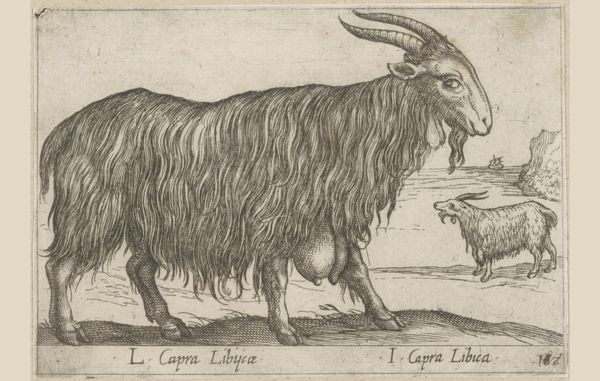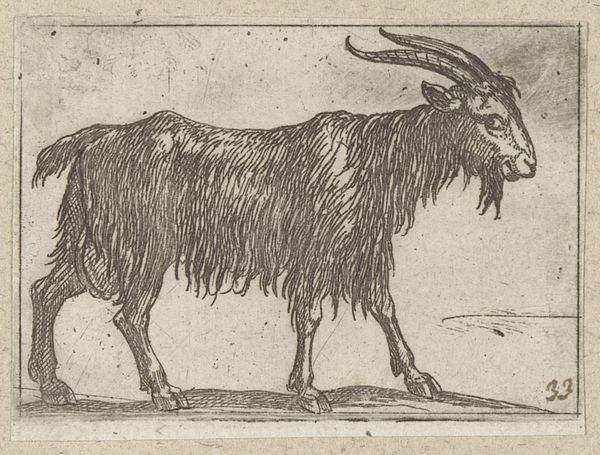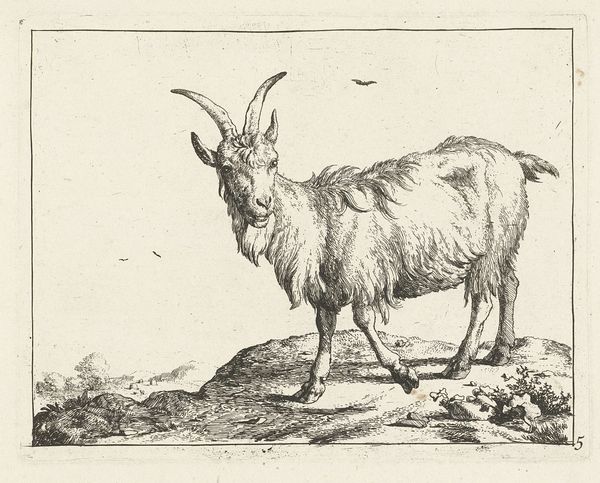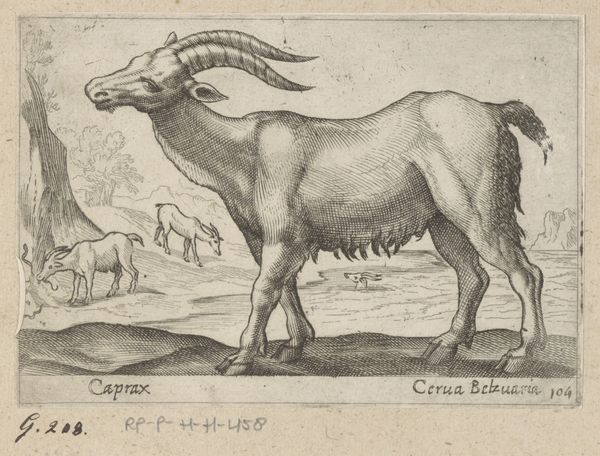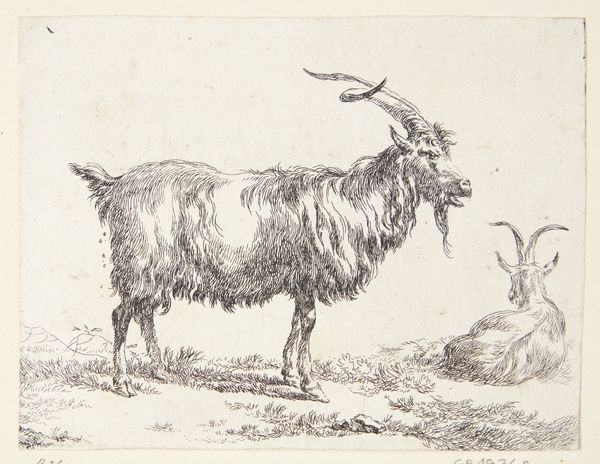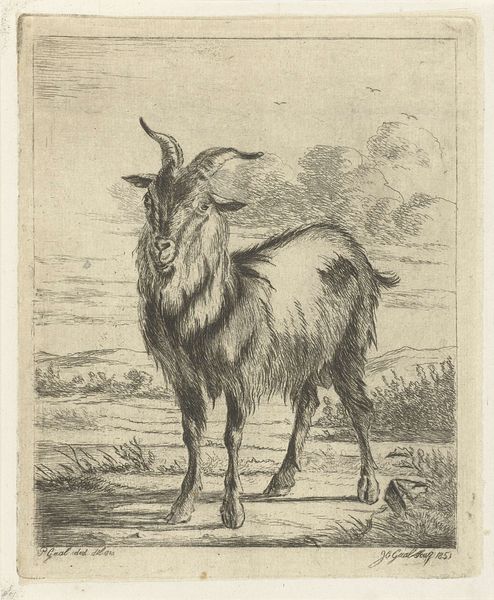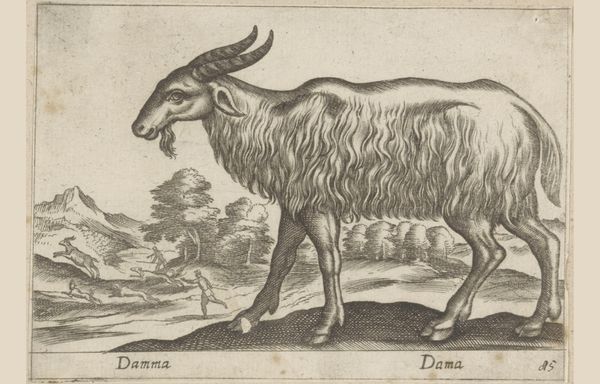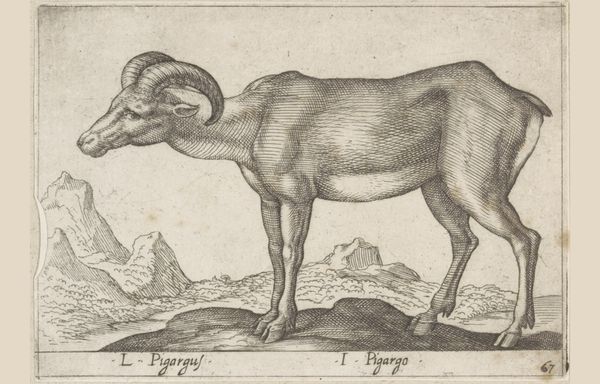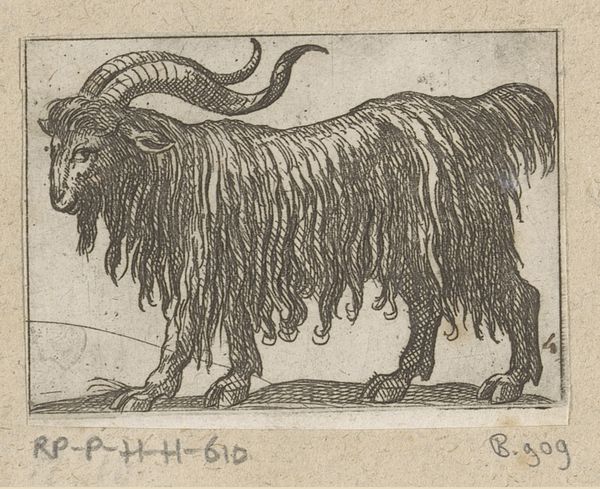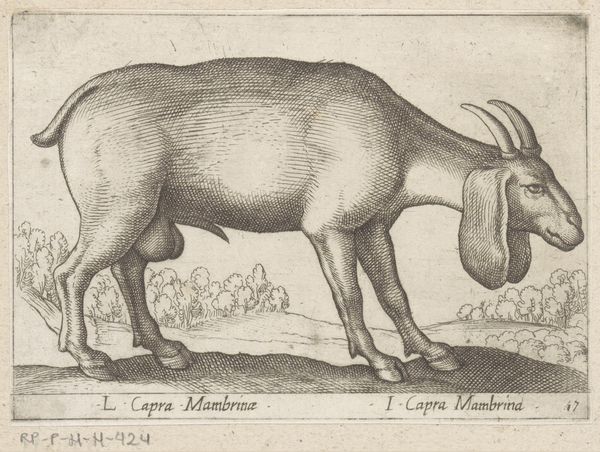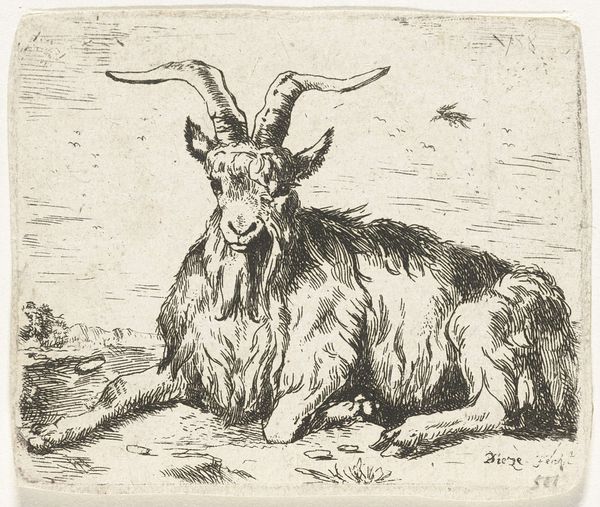
engraving
#
baroque
#
landscape
#
engraving
#
realism
Dimensions: height 95 mm, width 137 mm
Copyright: Rijks Museum: Open Domain
Editor: Here we have Antonio Tempesta’s “Geit,” an engraving from before 1650, held at the Rijksmuseum. There’s something so striking about this goat, almost noble in its pose, set against a very lightly sketched landscape. How would you interpret this work, particularly considering its historical context? Curator: What I immediately notice is the intense symbolism. The goat, throughout history, has been a potent emblem. Before demonization by Christianity, it was deeply connected to fertility cults, Dionysus, and untamed nature. Do you think Tempesta might be tapping into that duality, this tension between the pastoral and the profane? Editor: I hadn't considered that specific tension. I was seeing it more as a study of the animal itself, almost scientific in its detail, but the implied symbolism changes the entire reading. Curator: Exactly. And the landscape behind the goat is crucial. Note how sparse and vaguely defined it is; it directs the focus entirely back to the goat as the primal symbol. Is this wild nature being tamed or is it quietly threatening civilization? This engraving invites questions about control and the hidden power of nature. Think of it in the context of Baroque art where drama and spectacle are favoured: how can a single animal evoke so much symbolism? Editor: That’s fascinating. The composition seemed simple at first glance, but your analysis reveals how it can hold multiple layers of interpretation. The goat almost feels like a coded message from the past. Curator: It speaks to our enduring relationship with animals and how cultural memory is often embedded in visual symbols. Editor: It really makes me rethink how I approach older works. Seeing beyond the immediate and considering the historical weight each image carries opens up so many new avenues of inquiry. Curator: Indeed. What appears straightforward is often brimming with centuries of symbolic meaning!
Comments
No comments
Be the first to comment and join the conversation on the ultimate creative platform.
